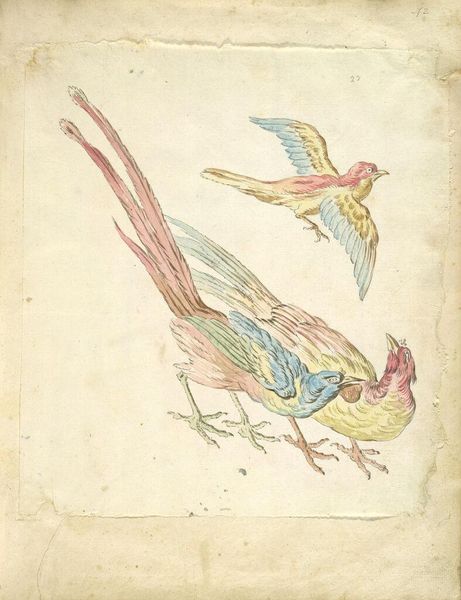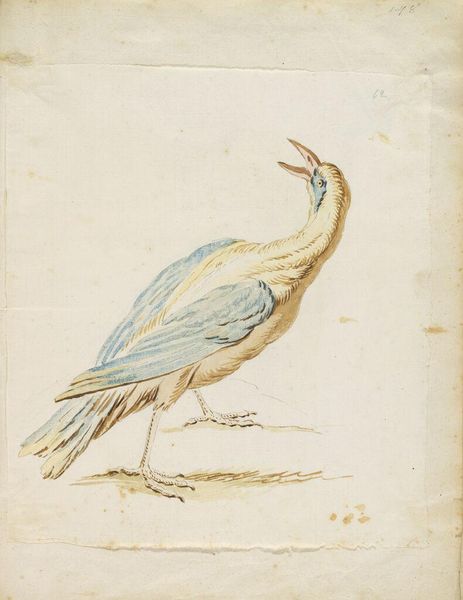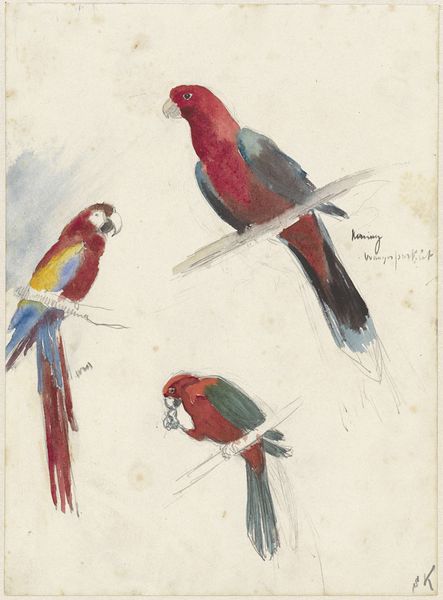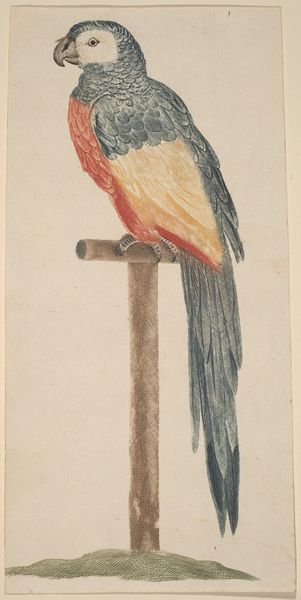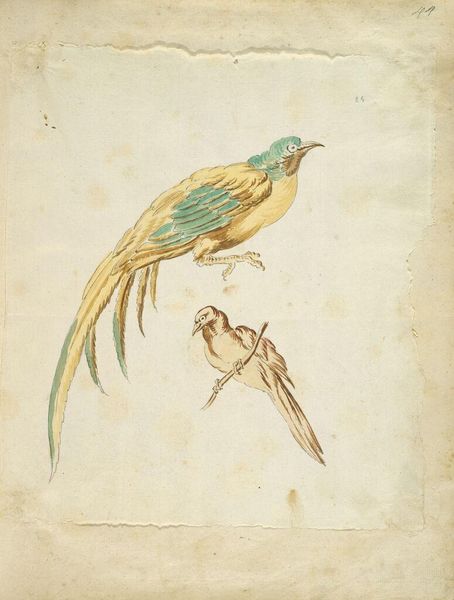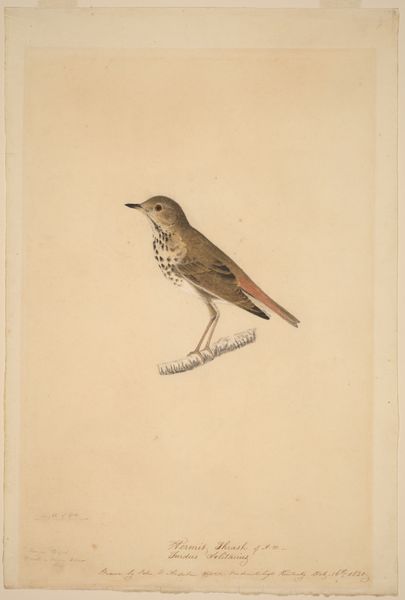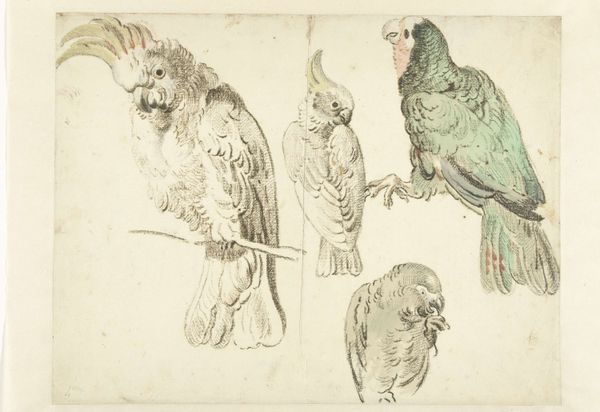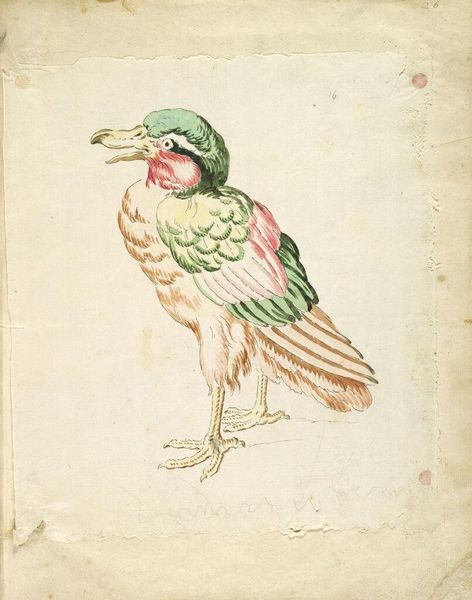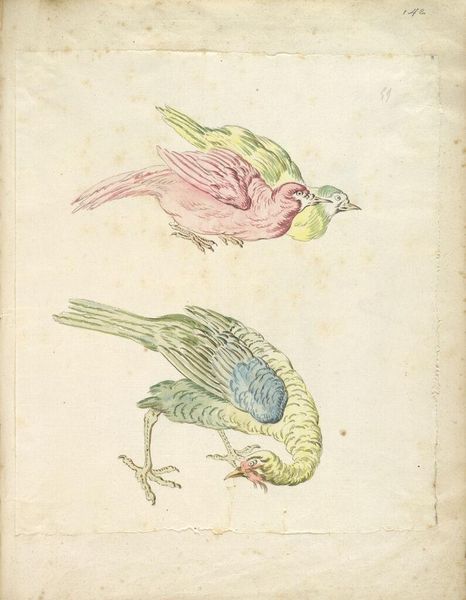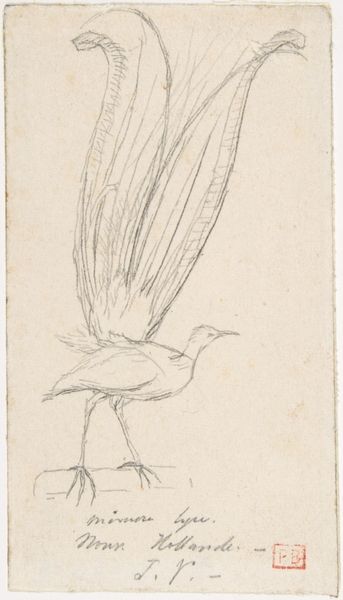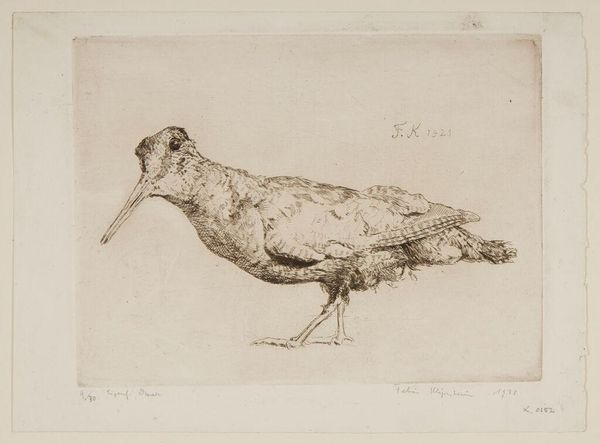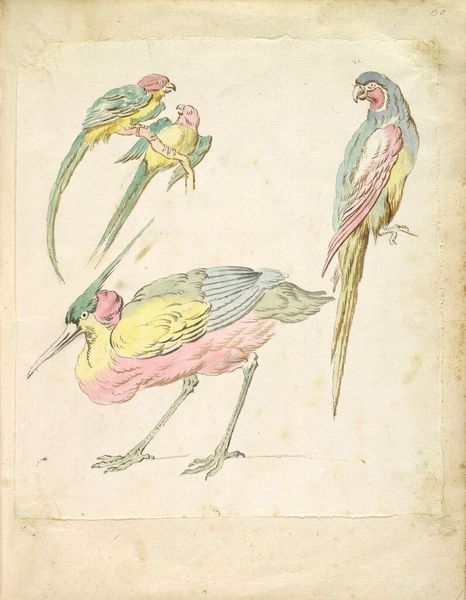
drawing, watercolor
#
drawing
#
animal
#
bird
#
watercolor
#
coloured pencil
#
underpainting
#
realism
Copyright: Rijks Museum: Open Domain
Curator: We're looking at "Onderlijf van een vogel met bonte veren," or "Lower Body of a Bird with Colorful Feathers," a watercolor drawing likely created between 1856 and 1870 by Maria Vos, and currently held at the Rijksmuseum. Editor: My immediate reaction is one of fragility, of transience. The watercolors give a softness to the plumage, a sense of the delicate bones beneath. It’s also strikingly cropped. Curator: Yes, the fragment feels particularly significant. Consider the time this piece was made; representations of animals, particularly birds, often symbolized freedom, beauty, and even the exotic for a burgeoning bourgeois class increasingly aware of a world beyond their immediate surroundings through colonial narratives. Maria Vos was part of this expanding world. As a female artist working in a male-dominated art world, the very act of capturing this fragment could be a subtle statement, a deliberate refocusing on overlooked aspects of beauty, or perhaps even the restraints placed upon women. Editor: Intriguing point! Looking more closely, I’m struck by how the watercolor medium itself reinforces your interpretation. Its translucent qualities allows a layering of colours. See how the red, blue, and yellow overlap? And the thin application mimics the lightness of the feathers themselves. Note also the composition; the lines suggest an upward trajectory, which leads my eye to consider all possible lines of sight above the visible part of the drawing. Curator: Precisely. The absence of the head and the careful rendering of the feathers become all the more potent. We see the bird not as a whole, an object of ownership or complete understanding, but as a partial being, perhaps mirroring the fragmented identities and roles available to women in the 19th century. Vos gives us a chance to witness the world from the point of view of that bird. Consider the environmental context in a time of industrial expansion and growing cities... How might one express feelings about freedom when restricted within the framework of prescribed norms and cultural biases? Editor: So you see this bird almost as a metaphor, or a visual signifier, rather than purely a study of form. It raises questions about gendered limitations on artists like Vos at that moment. Curator: Absolutely. But her creative process could be connected with different readings. Vos lived in a quickly shifting world, in which some could benefit much more easily from its opportunities. Her careful choice of watercolor on paper, a departure from larger oil paintings usually valued over depictions of animals, speaks to the significance she attributes to a form which might resemble something quite common, yet allows her freedom of expression outside established social constructs. Editor: Ultimately, "Onderlijf van een vogel met bonte veren" offers an enduring insight that connects personal experience and freedom of artistic creation, regardless of medium and scope. Curator: A beautiful sentiment with which I wholeheartedly agree, let's consider the implications and context it generates further...
Comments
No comments
Be the first to comment and join the conversation on the ultimate creative platform.
